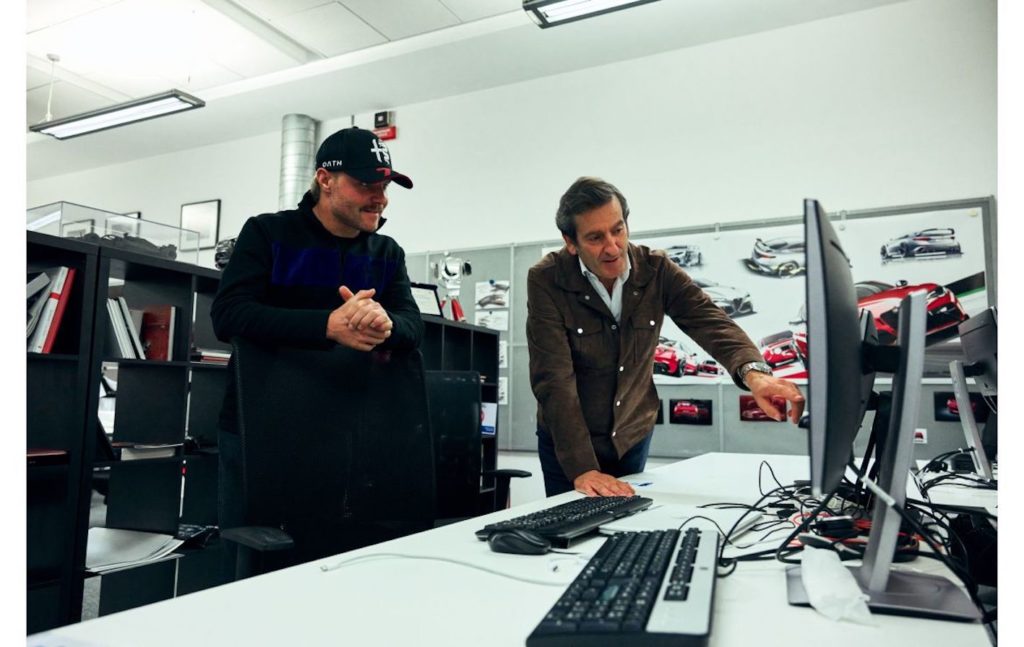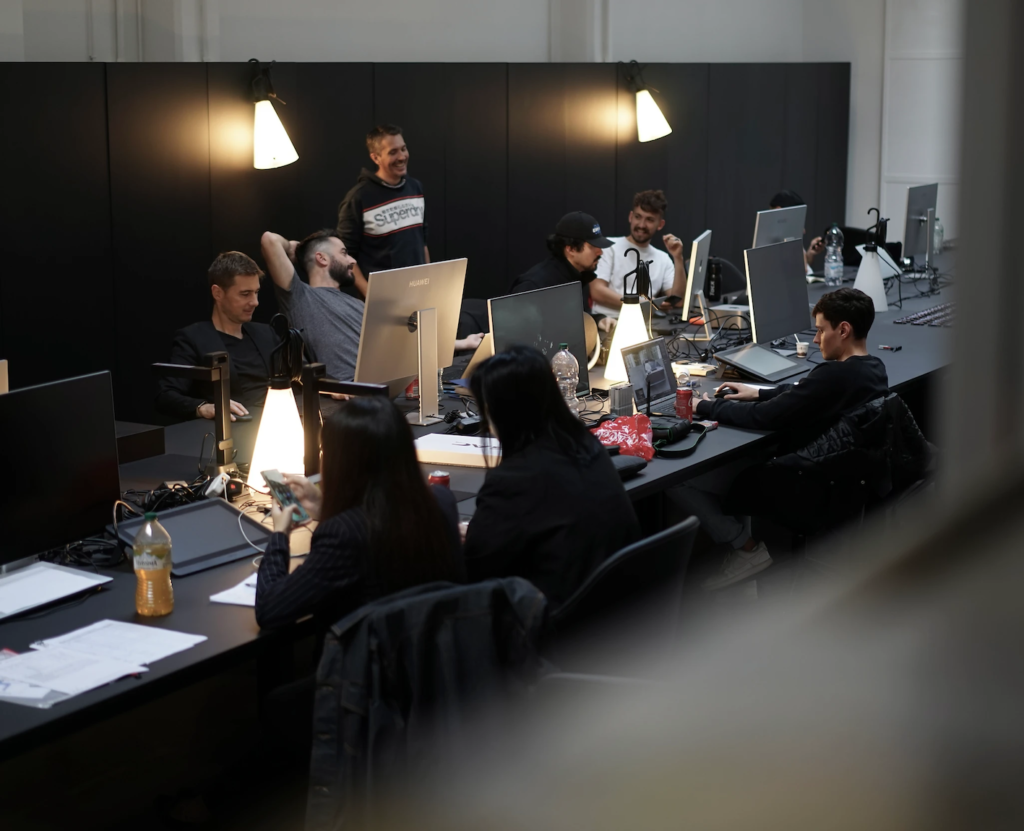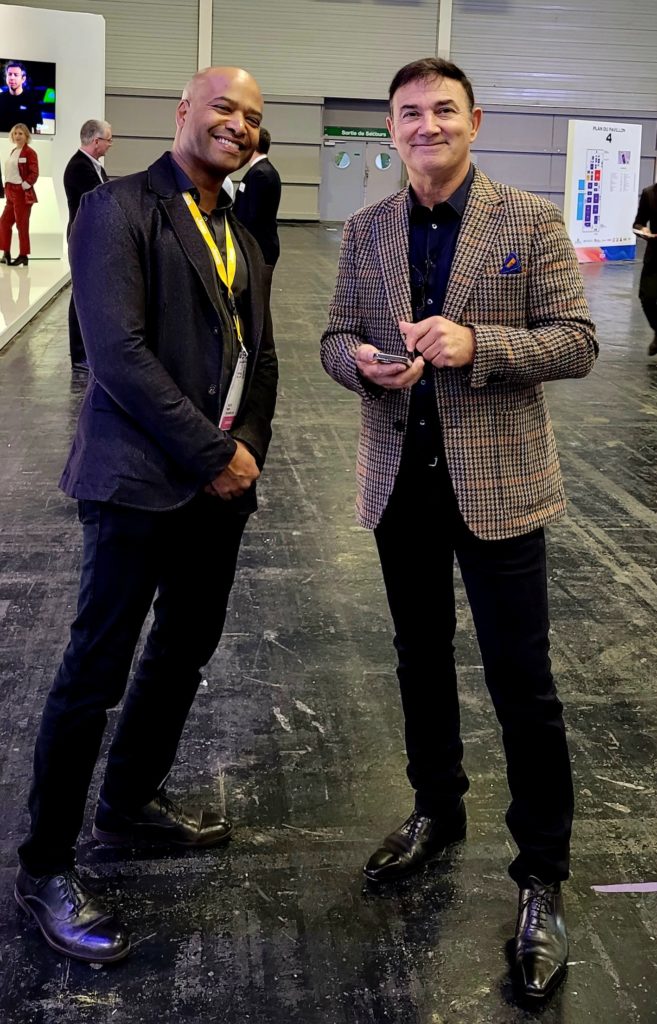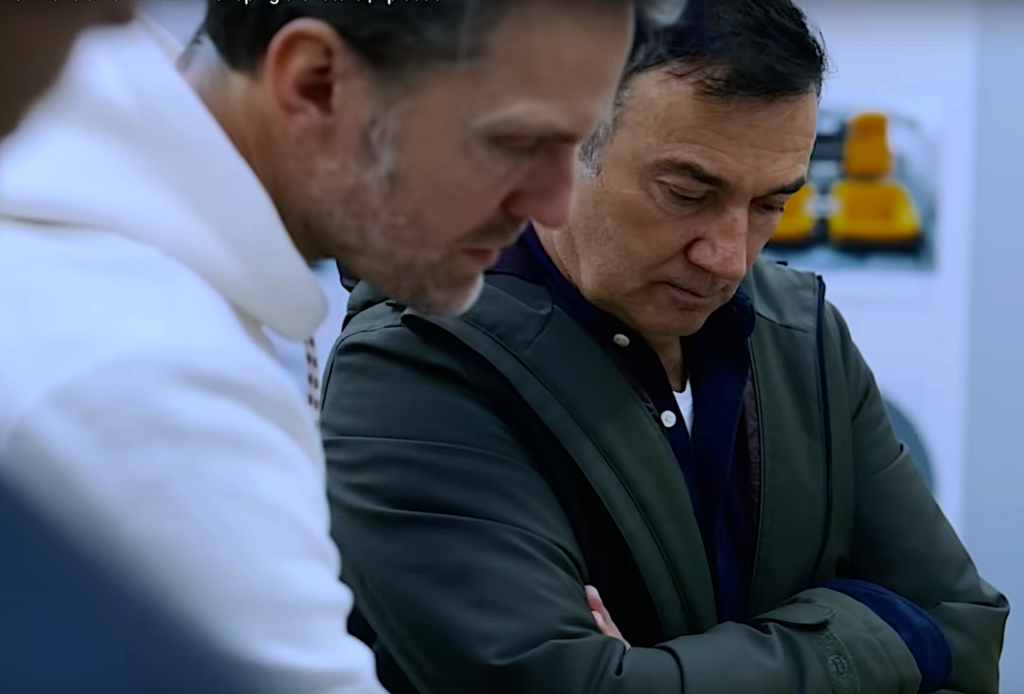
It’s taboo. And it is after a long investigation that we attempt to answer some of the questions that don’t often have official answers: how much does a designer earn? Are the Chinese luring European designers away with big cheques? Do all designers have the right to dazzling careers? Do the design directors of a major global automotive group hit the jackpot? In France, all these questions are rarely raised because the French, whoever they may be, don’t reveal their salaries to the world.

And as far as the competition is concerned, it’s a good idea not to divulge a company’s salary scale, for fear that designers will jump ship. This last argument is no longer entirely credible, however, because the world of designers is a very small one. Everyone knows more or less what’s going on next door, especially since the post-Covid era and the incredible mercato between the two French groups Renault and Stellantis.

But it’s not just Stellantis and Renault on the design planet… This survey was carried out by interviewing young and not so young designers in Europe, and at varying levels of responsibility, right up to the most senior position of brand design director. While designers need to make the right career choices if they hope to climb the hierarchy and enjoy the salary* that goes with it, the reality is not always so simple. In short, there are many designers who start at around €4,000 and very few who go on to earn more than €500,000.

*Salaries are expressed gross, over 13 months. In the absence of official information, they are given for comparison purposes only, according to the hierarchy established in the world of automotive design, and are therefore only estimates. It should be noted that tax rates are not identical from one country to another in Europe. Not to mention a comparison by continent. As for ‘bonuses’ and other rules implying at least the presence of a company car and other numerous benefits, they are not taken into account in the estimates given in this subject. They can, however, add 25 to… more than 50%, depending on the position, manufacturer and country concerned.

In Europe, the pay scale for designers varies slightly from one manufacturer and brand to another. Generally speaking, a designer starts at between €3,500 and €4,500 gross per month, or €58,500 per year. As the designer moves up the hierarchy with more experience, they can expect to earn between €5,500 and €6,500, or €84,500 a year at the most. As in any business, the higher you climb the mountain, the better it feels! In Europe, a figure designer can expect to earn between €6,000 and €7,000 a month, or €90,000 a year. The further up the mountain you climb, the greater the thrill, but the less oxygen there is. Places become increasingly scarce. According to the manufacturer’s internal organisation, there is a position of ‘Chief Designer’ on every continent, who can expect a salary of €8,000 gross, or €105,000 minimum gross annual salary in Europe, and much more in the United States, as we shall see below.

It would be at this ‘Chief Designer’ level of responsibility that the performance-related bonus would be added to the basic salary. But we won’t go into that territory, which is even more abstruse than the salary itself! That leaves just one position available before you reach the top of the mountain: Head of Brand Design. This position takes you into the upper echelons of carmaker salaries, with a monthly salary in Europe estimated at between €13,000 and €16,000, giving an average of around €184,000 per year. Once again, this estimate does not take into account the bonus, and would therefore only be a solid basis on which to build more substantial emoluments. It is not reserved for brand design managers, but of course for all similar positions in the whole galaxy of professions that revolve around car design, from the first pencil stroke to marketing.

All this has to be seen in the context of the idea that a designer starts at the bottom of a manufacturer’s hierarchy and works his way up, always internally. In this case, it is paradoxical to note that this loyal designer would end up being paid less than a designer coming from outside to occupy the same position. This is logical, as leaving one employer for another is often accompanied by an increase in pay. This is the case for the majority of employees. It is not uncommon for the manufacturer to choose a designer from outside the brand to take charge of the design teams. In France, this was the case in 2018 with the arrival of Pierre Leclercq from Kia.

TO FIND OUT MORE
Read the interview with the three design directors of Stellantis’ French brands: https://lignesauto.fr/?p=26834
The same logic applies to Gilles Vidal below, who retains his position as design director of a brand (from Peugeot to Renault) but who may have significantly increased his salary. Not to mention the bonuses that would be added to his remuneration. Perhaps Gilles Vidal thought that his path to the Himalayas at Stellantis was blocked. He would have been more interested in Luca de Meo’s proposal for 2020. Officially, he told LIGNES/auto at the time that his move was legitimised by ‘the challenge of renewing the design of the Renault brand’ as requested by Luca de Meo. This change triggered a wave of departures and arrivals in the Stellantis and Renault groups.

Many designers are no longer loyal to one brand for ever. The days of Gaston Juchet (almost 30 years at Renault styling below), Gérard Welter (over 42 years at Peugeot styling) and even Patrick le Quément (22 years at Renault design) are partly over. Nowadays, the big names pick the nectars of several different brands for a number of reasons. They may be attracted by the brand’s label, like Alejandro Mesonero-Romanos, who spent just six months at the helm of Dacia design, before moving on to take charge of Alfa Romeo design in June 2021. A designer can also imagine climbing the hierarchy more quickly by changing sides. We could also have written: he changes brands for the money. Who hasn’t wanted to change jobs to earn more?

Does every manufacturer apply the same pay scales? Of course not! But there was a time not so long ago (in the 1980s) when a stylist had to make do with a salary equivalent to that of an engineer. This was the case at Renault, in the days of Gaston Juchet, when the engineering department was responsible for styling. When Juchet was replaced by Patrick le Quément (below), whose vision was to internationalise design, the salary scale exploded (designers from other countries were paid higher salaries), because ‘Renault style’ became ‘Design Renault Industriel’, reporting to management rather than to the product. This was also an opportunity for the head of design to join the management committee, as others would do later… The number of designers at Renault rose from just under a hundred in 1986 to over 300 at the start of the 2000s.

Laurens van den Acker recently explained to LIGNES/auto that today, all the designers in the Renault group represent a ‘team’ of around 500 people. As a direct consequence of the creation of the highly international ‘Renault Design Industriel’ in 1988, the PSA group, Renault’s rival, has had to keep pace with changes in pricing. This trend had already been felt when PSA bought Chrysler Europe in August 1978, and British designers arrived in Poissy with higher salaries than French designers! Atmosphere…

TO FIND OUT MORE
read the interview with Laurens van den Acker : https://lignesauto.fr/?p=31468
As a result, fewer and fewer designers are tattooing ‘their’ brand logo on their heart. Fickle rather than loyal? Today, yes. And in this process, designers are being helped in part by Chinese carmakers, who have had the (good) sense to go out and hire European managers to run their fledgling design teams. The Volkswagen group’s former design boss – Klaus Zyciora below – took over as head of design at the Chinese group Changan last year, while Jozef Kaban, a former Volkswagen protégé, went to work for the Chinese company MG.

We should also add Bertrand Bach, former Opel designer for more than 7 years between 2005 and 2012, who after 3 years with Volkswagen joined Changan’s Turin studio. There he is Global Design Director of Changan-NEVO. The Chinese are simply following a trend set by Korea’s Hyundai-Kia, which called on Peter Schreyer (below) in its time. There is also Ivo Groen, who spent more than 17 years with the PSA and Stellantis groups, before becoming head of creative design for the Link&Co brand, founded in 2016 by the Chinese group Geely and the Swedish manufacturer Volvo.

While we’re on the subject of Asia, let’s stay there for a moment. In China, salaries for industrial designers start at around €3,000 a month and can go up to €5,500 a month depending on the position. To be a little more precise, a designer who is starting to gain recognition in China earns around €4,750 a month and a senior designer can reach an average of €6,300 a month. The question of salaries for European designers working for Chinese manufacturers needs to be addressed. For them, there are two possible scenarios:
1-The European designer agrees to go and work in China on this type of salary. It should be borne in mind that the cost of living in China is around 40% lower than in France, and that such a salary is attractive.
2-The designer agrees to work for a Chinese manufacturer… but in Europe, in their expatriate design studios. Salaries can then be doubled. Or even three times for senior positions.

Why are Chinese manufacturers setting up design centres in Europe (or the United States), such as Changan in Turin and GAC in San Francisco and Milan? Very often, Chinese applicants understand that expatriating to China can cost a lot of money, and that the motivation is probably not the same when it comes to joining a country whose customs are so different from their own. The opening of Chinese design centres in Europe therefore makes sense. For example, the GAC group does not (yet?) sell cars in Europe, yet it has opened a small advanced design studio in Milan. It is run by Frenchman Stéphane Janin (below), formerly responsible for the design of Renault pre-stages and concept cars, assisted by another Frenchman, Yann Jarsallé. More and more French people are working for the Chinese. The good news is that this is proof that the quality of the training and work of creative people made in France is recognised the world over! All in all, the Chinese design studios based in Europe (Milan, Turin, Munich) are seen as a design force for their projects, for global market research, international strategy and assistance in entering the world market.

TO FIND OUT MORE
read the interview with Stéphane Janin, GAC-Milan : https://lignesauto.fr/?p=32818
Another example is the designer Damien Fressard, ex-DS Automobiles, who has been working for the Chinese group Geely since September 2023 in a studio that is also based in Milan: the ‘Geely Auto Innovation Design Center Italy’. The advantage: you can probably eat better there than in Guangzhou (my personal opinion!) The advantage for designers in this position is that they remain in an environment that they master, and that this environment is the one that the Chinese want to feel in their products destined (one day) for Europe. And don’t be fooled into thinking that a European designer working for a Chinese manufacturer spends his life in aeroplanes. At Milan-based GAC, we’re talking about an average of three or four Milan-China trips a year. And this is thanks to the digital tools that now make it possible to digitally link up different design centres for the same brand, located all around the world, in complete confidentiality, to define the style of a new product. Chinese carmakers are therefore continuing to hire European designers.

This real revolution has taken place in Germany, in Munich, where Chinese carmakers have poached designers at salaries that are totally out of line with European scales. For example, a senior designer can be hired on the salary of a brand design manager, i.e. a minimum of €130,000. There are, however, two constraints on this type of recruitment. The designer does not necessarily benefit from a bonus linked to results, as is the case for almost all European designers at this level, and often the contract is for a fixed term. This notion of securing a designer’s position is important in different countries. In Germany, employees up to manager level (Chief Designer for example) are fairly well protected by the IG Metall trade union (metal industry among others).

Within a car group itself, pay disparities are also possible, and even logical. When a group brings together several brands following mergers – Stellantis comes to mind, which now manages 14 brands – it is obliged to bring itself into line with the merged company. The Opel brand, which was acquired by PSA in 2017, had its own remuneration packages. Including at the heart of design. Mark Adams below, Opel’s Vice President in charge of design, was part of a brand previously managed by General Motors.

The American parent company had a reputation for offering higher salaries than European companies. Mark Adams would certainly have retained all or part of this financial advantage. It is therefore possible that his salary today is higher than that of a design manager at one of the other brands in the Stellantis group, depending of course on seniority. Based on the information published above, such a position of responsibility would be remunerated at a minimum of between €130,000 and €160,000 a year, depending on the automotive group concerned, not including bonuses…

We’re talking about General Motors, the former owner of the European Opel brand. Clearly, the designers of American brands have a completely different aura to their European counterparts. In the United States, average annual salaries for designers are estimated at between €66,000 (€5,500 monthly) and €130,000 (€10,000 monthly). Ralph Gilles, above left (with Jean-Pierre Ploué), who is responsible for the design of the American brands – and Maserati – of the Stellantis group, is a star on the other side of the Atlantic, and obviously his salary is not in that range! He may be a star, but that doesn’t detract from the personality of a charming man who also has a virtuoso command of the French language.

His European ‘twin’, Jean-Pierre Ploué below, is responsible for Stellantis design for the European marques Peugeot, Citroën, DS Automobiles, Opel, Vauxhall, Fiat, Alfa-Romeo, Lancia, Abarth… and perhaps he competes with his American counterpart in terms of salary? What we can say is that great manager-designers like Ralph Gilles (Stellantis USA), Jean-Pierre Ploué (Stellantis Europe), Gorden Wagener (Mercedes) and Peter Schreyer (Kia-Hyundai) are clearly above the fray. For them, it is no longer a question of an annual salary similar to that of brand design directors (€130,000 excluding minimum bonus) but of remuneration approaching €600,000 per annum. And depending on the group (or rather the continent!) the annual salary with bonuses could be close to a million euros for some.

TO FIND OUT MORE
read the interview with Jean-Pierre Ploué : https://lignesauto.fr/?p=26695
It is important to understand that the careers of designers, whether they are ‘simple’ designers or brand design managers, or even more, are not all linear and identical. The example of Karim Habib (below) is indicative of a constant progression: 5 years with BMW in Germany, 2 years with Infiniti in Japan, 4 years with Kia as a designer and finally the ultimate reward: the position of Executive Vice President at Kia since January 2023. So sometimes you have to look outside the company for career progression, which obviously explains the turnover in the design world. For example, after 7 years with Peugeot and a year with Mercedes, Julien Crueff took the risk (a calculated one, we imagine) of moving to the Chinese manufacturer Nio, and was appointed Head of Interior Design at Nio’s Munich studio in September 2023.

Yet another French designer working for a young Chinese manufacturer (2014) who is nonetheless working in Europe. You have to know how to anticipate opportunities. Or provoke them, just like everyone else! Every career is different, and so every salary is different, depending on the experience you have gained, and in particular your international experience. Even so, international experience is not imperative. While Matthias Hossann (below), Peugeot’s current head of design, spent more than 5 years in PSA’s Chinese design studio, Gilles Vidal, who preceded him in this position, only had international experience through files or investigations, as he moved from Citroën to Peugeot, then from Peugeot to Renault without working in an international studio.

Jean-Pierre Ploué, Stellantis design director for European brands (apart from Maserati), has been a loyal member of the group since 2000, when he took charge of Citroën design with Vincent Besson at the helm.For 24 years now, he has been working his way up the hierarchy to reach the very top.At nearly 62, next September, is Jean-Pierre Ploué thinking about his succession? No doubt, even if the energy that has characterised him since he was a young designer doesn’t seem to have left him. No doubt he will still be pushing open the doors of Italian and French design offices for a few (long?) months. But then…

Who will succeed him? It’s an open question. Profiles with this level of responsibility are hard to come by.Only a few of the world’s leading automotive design bosses can be counted on the fingers of both hands to approach – and sometimes even exceed – €600,000 a year. Clearly, the vast majority of the world’s thousands of car designers remain in a much more modest position. This is sometimes by choice, because there’s a gulf between being a good chief designer, recognised and paid what you’re worth, and being a great designer-manager, capable of controlling up to 500 people, and defining the future of design for several car brands in a global group! It’s not the same job, and it’s not the same hardship. And it’s well known that “all work deserves reward”!
LIGNES/auto would like to dedicate this article to all those designers who have worked day and night and seen their project rejected at the end of the very last straight line; to those men and women who, at times, have had doubts and have even been on the verge of despondency…Fortunately, it’s often enough to pick up the pencil or the stylus of the graphics tablet to once again raise the roof!

